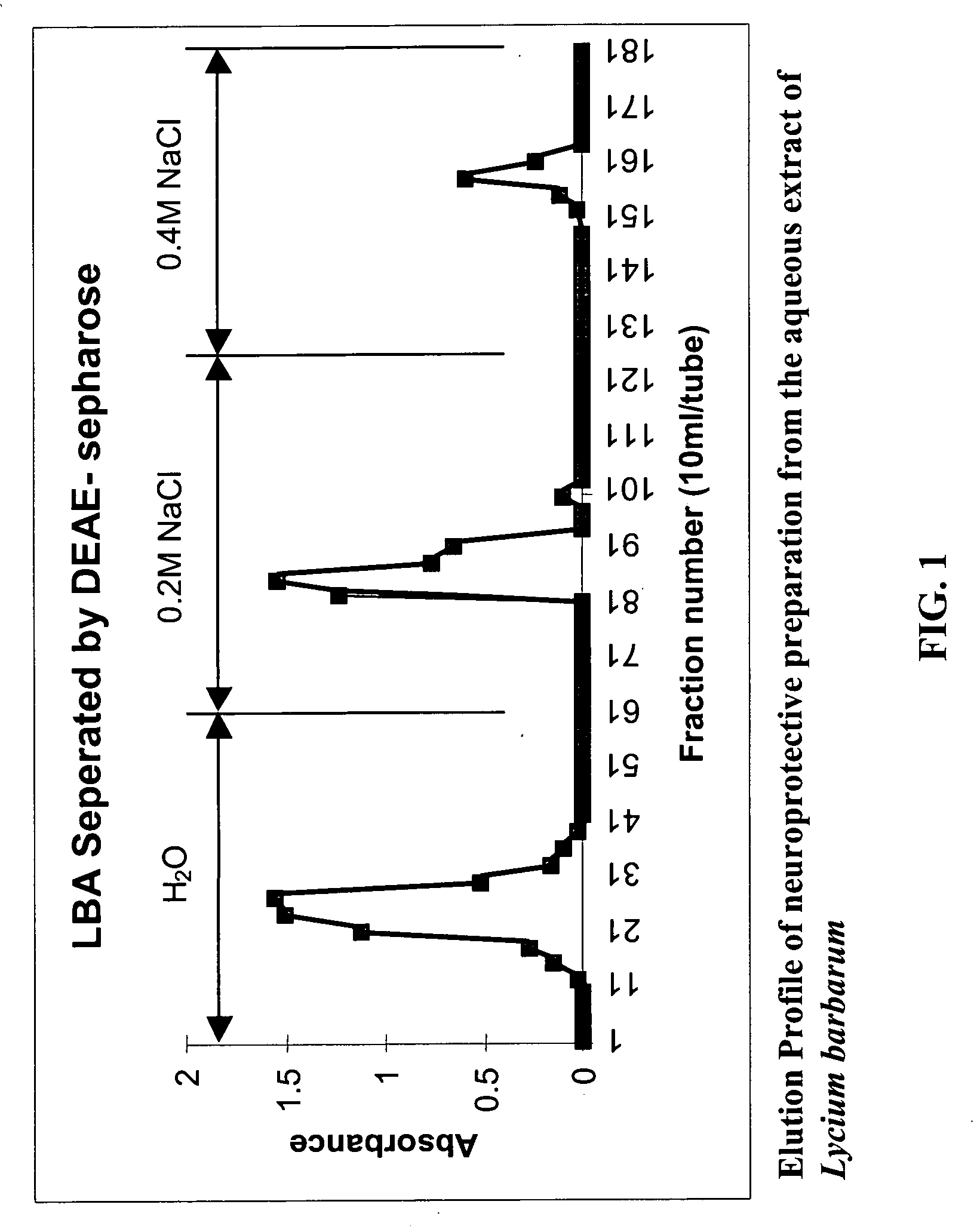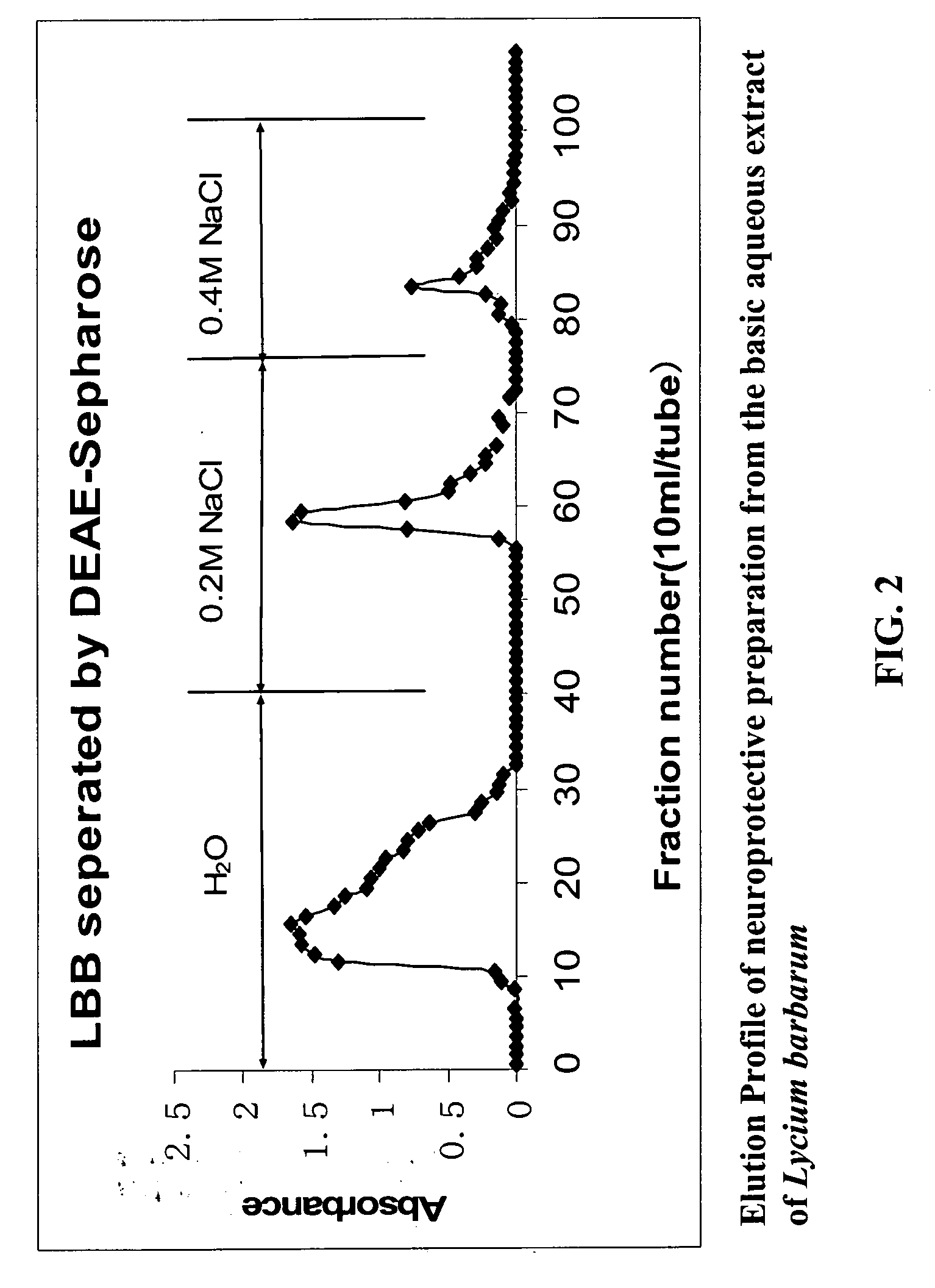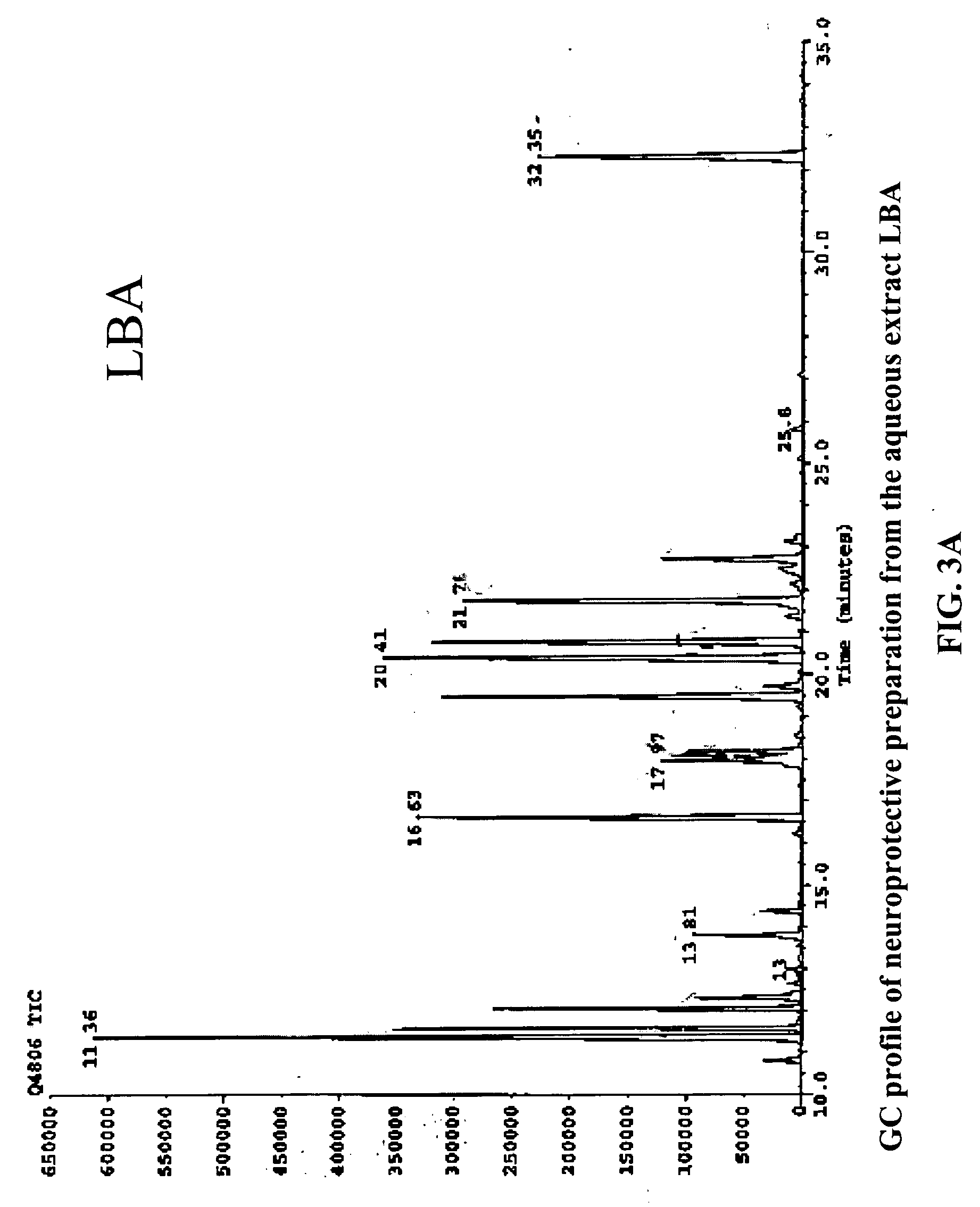Polysaccharide extract from Lycium barbarum as neuroprotective agent against beta-amyloid peptide neurotoxicity
a technology of beta-amyloid peptide and polysaccharide, which is applied in the direction of sugar derivates, plant/algae/fungi/lichens ingredients, biocide, etc., can solve the problems of neuronal loss, major health problems, and occurrence of this disease, so as to prevent neuronal death
- Summary
- Abstract
- Description
- Claims
- Application Information
AI Technical Summary
Benefits of technology
Problems solved by technology
Method used
Image
Examples
example 1
Extraction of Invention Composition from Lycium barbarum
[0071] The dried fruit of Lycium barbarum (10 kg) were soaked in 95% ethanol (10 L) for 120 h. The resultant residue was filtered, dried and ground into small pieces with a blender. Distilled water (50 L) was added and the suspension was simmered at 95-100° C. for 3 h. The extract was decanted to a clean container and the Lycium barbarum was extracted two more times with distilled water under the same conditions. The extracts were poured through a cotton cloth to remove insoluble materials (residue). The volume of the clarified extracts was reduced to about 20 litres by a rotary evaporator. The condensed extract was freeze-dried. A total of 1800 g of dark brown dried powder was obtained.
[0072] The neuroprotective component in the resulting aqueous extract was precipitated by ethanol. To achieve this, 1800 g of the freeze-dried aqueous extract was dissolved in 20 L of water, and ethanol was added to a final concentration of 90...
example 2
Purification of Extract Fraction by Column Chromatography
[0074] The neuroprotective component of the aqueous extract was further purified by gel filtration column chromatography. An aqueous solution of LBA (2 g in 3 ml) was applied to a DEAE Sepharose Fast Flow column (100×2.6 cm) and eluted first with distilled water followed by 0.2M and 0.4M aqueous sodium hydroxide solution (gradient elution). Fractions of 10 ml were collected and the amount of carbohydrate in the collected fractions was monitor by phenol-sulfuric acid assay using water as the standard (see FIG. 1). These separated fractions were concentrated by a rotary hevaporator (about 10 ml) and exhaustively dialyzed (MW cutoff 3000-5000 Da) with running water for 60 h followed by being freeze-dried to give three fractions, hereafter designated LBA-A0, LBA-A1 and LBA-A2.
[0075] The neuroprotective component of the basic aqueous extract was further purified by a similar method. Thus, an aqueous solution of LBB (2 g in 5 ml) ...
example 3
Chemical Nature of Neuroprotective Compound from Lycium barbarum
[0076] The chemical nature of the aqueous extract and basic aqueous extract neuroprotective fractions was investigated by different chemical tests. The glycosyl compositions analysis was performed by combined gas chromatography / mass spectrometry (GC / MS) of the per-O-trimethylsilyl (TMS) derivatives of the monosaccharide methyl glycosides produced from the sample by acidic methanolysis. To achieve this, methyl glycosides were first prepared from a portion of each dry sample by methanolysis in 1 M HCl in methanol at 80° C. (18-22 h), followed by re-N-acetylation with pyridine and acetic anhydride in methanol. The samples were then per-O-trimethylsilylated by treatment with Tri-Sil at 80° C. (30 min). The results confirmed that the neuroprotective aqueous extract fraction from Lycium barbarum is different from the basic aqueous extract fraction (see FIGS. 3 and 4).
[0077] Elemental, infrared, NMR and other spectroscopic a...
PUM
| Property | Measurement | Unit |
|---|---|---|
| concentration | aaaaa | aaaaa |
| molecular mass | aaaaa | aaaaa |
| volume | aaaaa | aaaaa |
Abstract
Description
Claims
Application Information
 Login to View More
Login to View More - R&D
- Intellectual Property
- Life Sciences
- Materials
- Tech Scout
- Unparalleled Data Quality
- Higher Quality Content
- 60% Fewer Hallucinations
Browse by: Latest US Patents, China's latest patents, Technical Efficacy Thesaurus, Application Domain, Technology Topic, Popular Technical Reports.
© 2025 PatSnap. All rights reserved.Legal|Privacy policy|Modern Slavery Act Transparency Statement|Sitemap|About US| Contact US: help@patsnap.com



